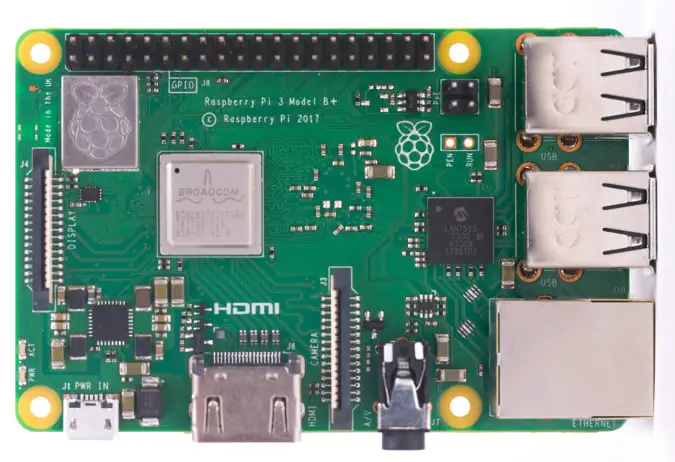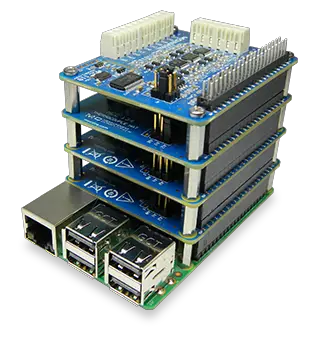In this Article we are going to discuss the difference between two popular circuit boards types, Arduino and Raspberry Pi. These two boards are used by a wide range of people for a variety of jobs, including DIY builders, Robotics, Prototyping and even used by Professionals.
Arduino
Arduino was developed by the Ivrea Interaction Design Institute in 2005, with the aim of creating a tool for fast prototyping. It’s primary audience were students without a background in electronics and programming. The Arduino software is easy to setup and install, and runs on all major Operating systems like Windows, Mac and Linux.
As it’s popularity amongst the community grew, the Arduino boards began to diversify and adapt to newer requirements and demands. It’s offerings increased to accommodate IoT applications, 3D printing, Robotics and embedded environments.
On top of all thus, the both the Arduino boards and the software for it are all completely open source, allowing users to contribute and adapt their boards according to their needs.
Arduino over the years has expanded and now offers many different boards depending on your requirements. The most popular board however, remains the Arduino Uno. Other board types include a mini-version of the Arduino board, and another type with Wi-Fi and Bluetooth options built in.
Arduino programming is done in C or C++ typically, but also has a more kid-friendly version which is a drag and drop kind of editor like Scratch.
Raspberry Pi
The Raspberry Pi was developed at the University of Cambridge in the United Kingdom in 2012, with the aim of teaching and improving programming skills of students in developing countries. While Arduino is a Microcontroller board, the Raspberry Pi is a Microprocessor based board that acts as a All-in-One computer.
You can connect several peripherals to a Raspberry Pi board, such as a Monitor (through HDMI or AV Port), Mouse and Keyboard (through USB), connect to internet (through Ethernet or Wi-Fi), or even add a Camera (through the dedicated Camera Interface), just like we do to our regular desktop computers. The possibilities are endless.
As Raspberry Pi is essentially a full computer, it can also run an Operating System. The Raspberry Pi Foundation, the organization which is responsible for designing and developing Raspberry Pi SBC, also provides a Debian based Linux Distribution called the Raspberry Pi OS (previously known as the Raspbian OS).
Programming for development in Raspberry Pi is done using languages like Python, C, C++, Scratch and Ruby. (This is possible because it runs off a Linux Operating System).
Who uses Arduino?
Thanks to its simple and accessible user experience, Arduino has been used in thousands of different projects and applications. The Arduino software is easy-to-use for beginners, yet flexible enough for advanced users. It runs on Mac, Windows, and Linux.
Teachers and students use it to build low cost scientific instruments, to prove chemistry and physics principles, or to get started with programming and robotics. Designers and architects build interactive prototypes, musicians and artists use it for installations and to experiment with new musical instruments.
Makers, of course, use it to build many of the projects exhibited at the Maker Faire, for example. Arduino is a key tool to learn new things. Anyone – children, hobbyists, artists, programmers – can start tinkering just following the step by step instructions of a kit, or sharing ideas online with other members of the Arduino community.
Why use Raspberry Pi?
Despite its original intentions to promote programming languages like (Scratch and Python) in School, Raspberry Pi became very popular amongst another group of people. Nowadays, Raspberry Pi is widely used amongst DIY builders, hobbyists and enthusiasts.
Raspberry Pie is used to develop a wide variety of applications such as Robotics, Security Systems, Weather Stations, Automation systems and almost anything else that you can think of. Because it’s a computer, combined with the ability to easily connect to hardware components, it has almost unlimited potential in the right hands.
Table Comparison
A comprehensive review of what we have discussed so far and some other differences present between Arduino and Raspberry Pi.
| Points | Arduino | Raspberry Pi |
|---|---|---|
| Origin | Micro-Controller | Micro-Processor or “SCB” (Single board computer). |
| Operating System | Arduino as a micro-controller has no OS. | Has it’s own OS called Raspberry Pi OS needed to boot it up. |
| Multi-tasking | Only capable of handling simple and repeated tasks. | Can handle more complex and diverse commands. (Has an OS). |
| License | Open Source | Closed Source |
| Price | (Will vary depending on Board Type and Size) Generally cheaper than Raspberry Pi, around 20-30$. | (Will vary depending on Board Type and Size) Ranged around 30-40$ for base model. |
| Languages used | Arduino programming is done with the C or C++ language. | The main languages used in Raspberry Pi are Python, Scratch, Ruby, C and C++. |
| Wi-Fi / Bluetooth | Arduino supports Wi-Fi and Bluetooth natively, but not on the same board. You can however add the module in yourself. | Has both Wi-Fi and Bluetooth capability and can easily access the internet. |
| Power | Operates at a standard 5V. Can be powered using a PC’s USB port. (Most sensors and components are adapted for Arduino) | Operates at 3.3V. Need to be a little careful with components compatibility. |
| Expansion | Can be expanded with Arduino Shields, placed upon the pins. | Can be expanded with Raspberry Pi expansion boards. Has more options and expansion add-ons that Arduino. |
| Hardware | Has low specs (RAM measured in KB’s, low amount of pins etc.). | The Average board as 1 GB of RAM, and ports for connecting Key-boards, mouses and HDMI Wires. |
Conclusion
Both boards have many similarities and overlapping areas of use. They are however, different one a fundamental level (Arduino being a microcontroller and Raspberry being a mini-computer) and have their own specialized tasks. Here are some useful points you can use in making your decision.
- If you are looking for a portable mini-computer to which you can attach PC components, the Raspberry Pi is what you need.
- For simple repetitive tasks that might involve sensors and other basic components, Arduino is a cheap and reliable option that’s compatible with all kinds of hardware.
- For more complex tasks that might require multi-tasking, Raspberry Pi is the way to go. This is possible due to the OS and better specs in it’s board.
- If you want a board with high performance, Raspberry Pi easily beats Arduino by a long shot.
- If your project requires a board with low power, Arduino would be preferable as it uses less power due to less overhead and minimal specs.
Some other points to consider.
- Arduino is a micro-controller, which means it requires a computer to which you can connect it too. You will then use this computer to program and develop it. Raspberry Pi is it’s own Computer, but you may still require some add-ons and extensions
Other Images:
Raspberry Pi HAT (expansion boards):
Arduino Shields Expansion:

If you are looking for spying apps for mobile devices or ways to track cell phones related materials and don’t want to go through hassle of creating your system from scratch, there are various pre-built options out there!
This marks the end of the Difference between Arduino and Raspberry Pi Article. Any suggestions or contributions for CodersLegacy are more than welcome. Questions regarding the article content can be asked in the comments section below.




